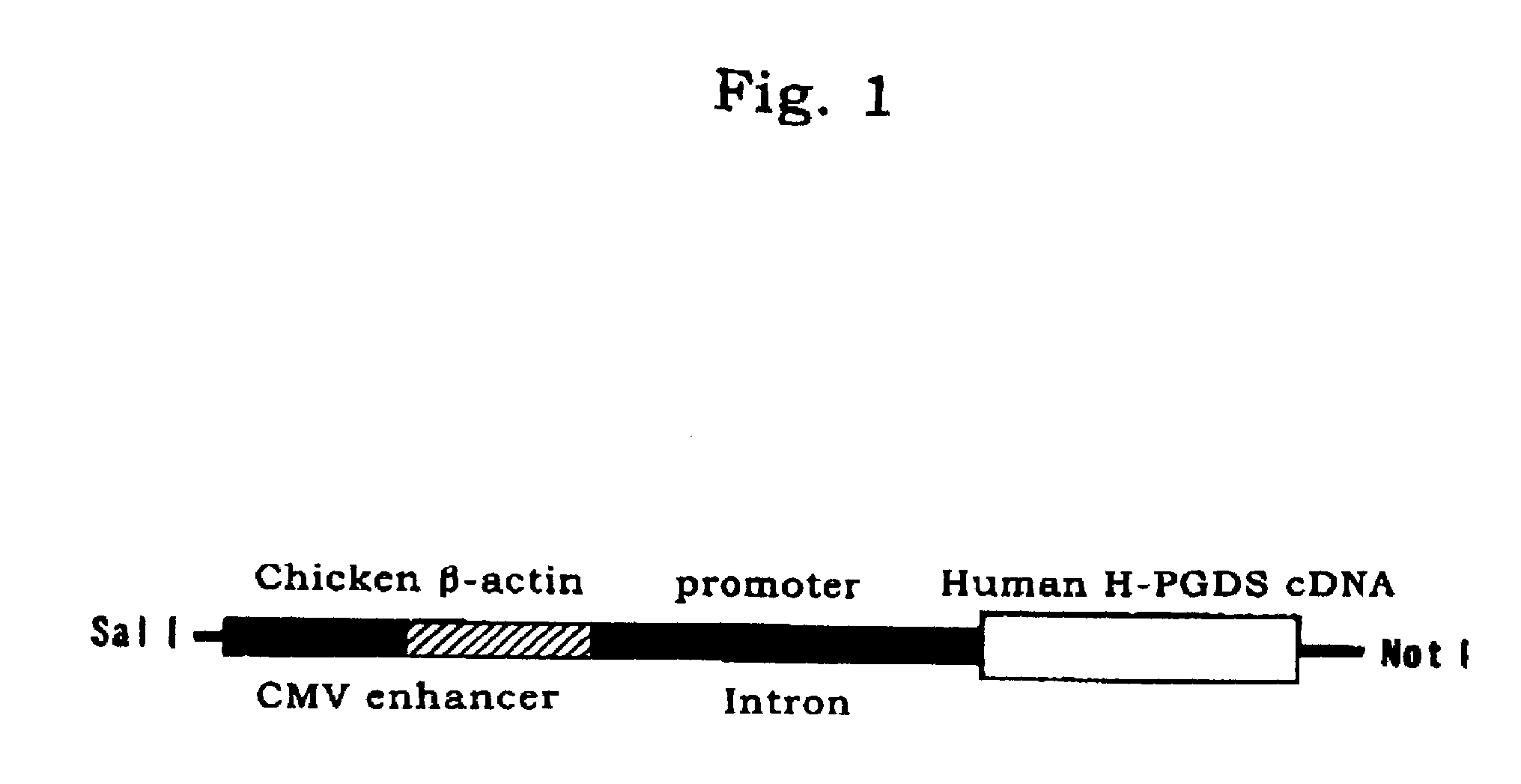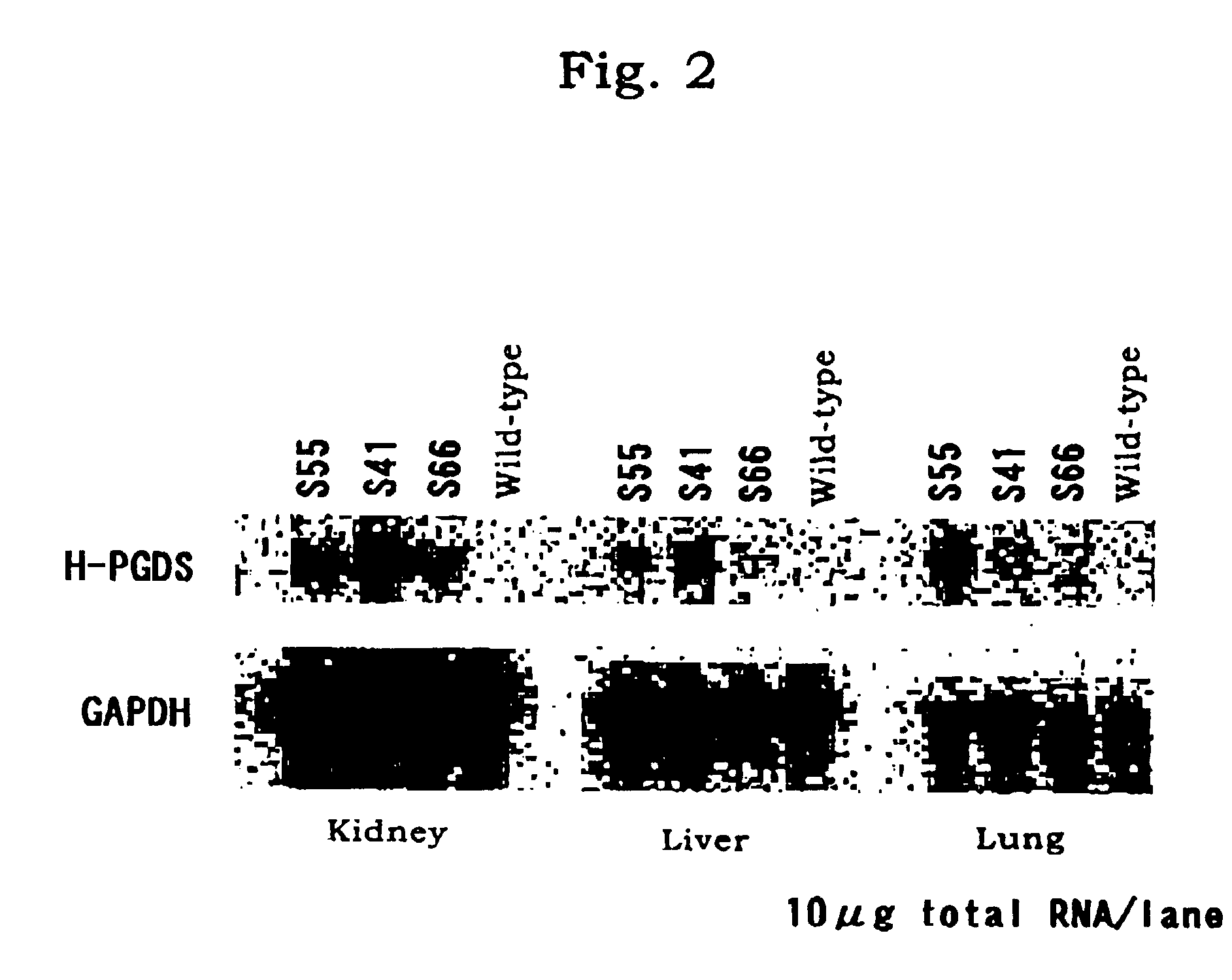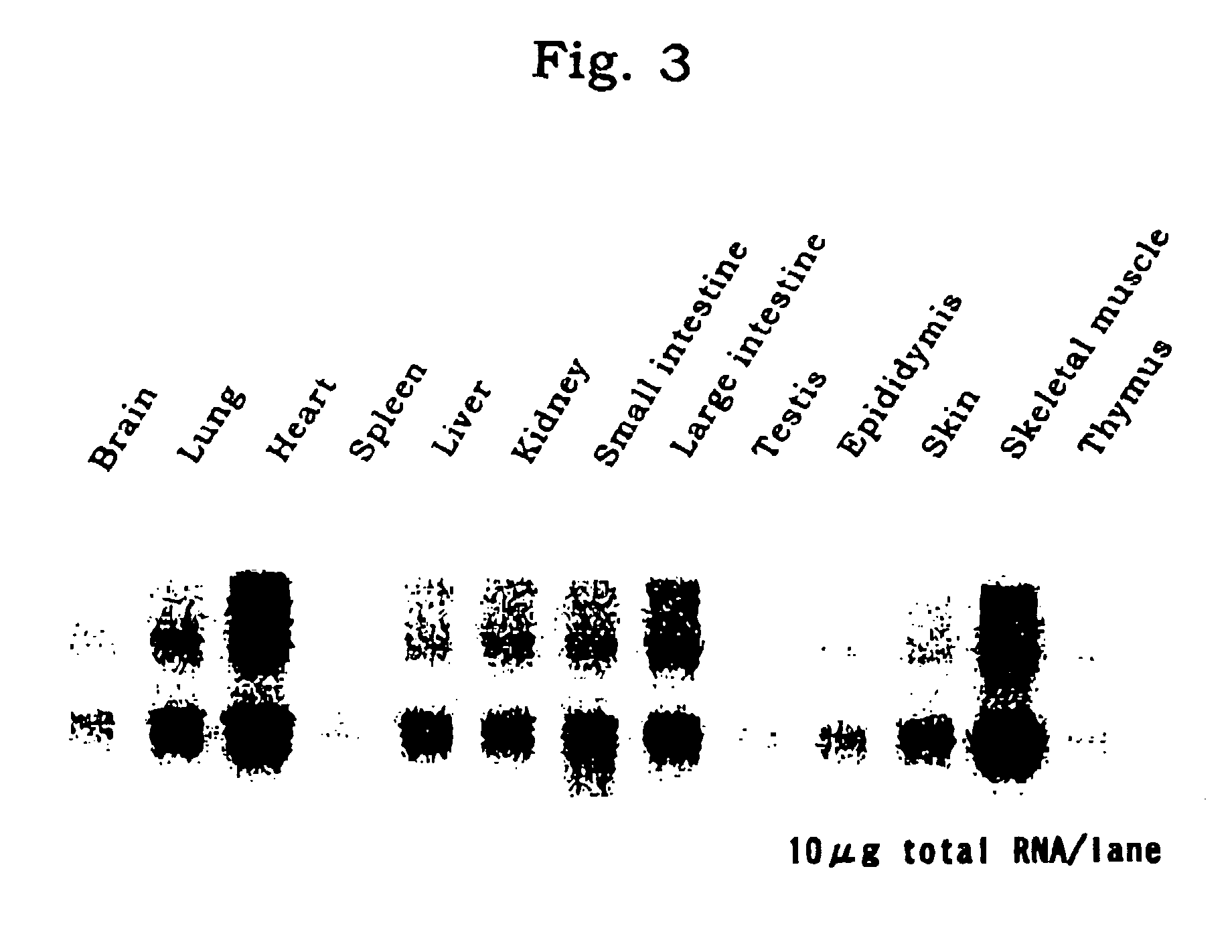Animal with the mass expression of human gene and test method by using the animal
a human gene and mass expression technology, applied in the field of human gene overexpression animal, can solve the problem that there is no animal model system that is able to achieve the effect of expressing human genes
- Summary
- Abstract
- Description
- Claims
- Application Information
AI Technical Summary
Problems solved by technology
Method used
Image
Examples
example 1
(1) Production of Transgenic Mice:
[0026]From the cDNA library prepared from mRNA of human cells, human H-PODS cDNA was cloned by using rat H-PGDS cDNA as a probe.
[0027]Next, the human H-PGDS cDNA was inserted and linked into a cloning site (SalI / NotI) of the vector (pCAGGS) to construct a transfer vector. FIG. 1 shows the construction of the transgene in the transfer vector. As in FIG. 1, the transgene has a CMV enhancer and a chicken β-actin promoter upstream the H-PGDS cDNA, and when introduced into a mouse chromosome, it expresses a large amount of H-PGDS mRNA owing to the action of the enhancer and the promoter.
[0028]The transfer vector was introduced into fertilized eggs of an FVB mouse through microinjection. The gene-introduced fertilized eggs were then implanted into the oviduct of a surrogate mother in an ordinary manner, in which those are ontogenized into individuals, and the individuals were then born.
[0029]DNA was extracted from the tail of each of the thus-obtained mou...
example 2
[0032]As a human asthma model, the transgenic mice obtained in Example 1 were analyzed in antigen-induced lung inflammation model.
[0033]After antigen challenge, the invasion of eosinophilic leukocytes into the lung of the transgenic mice significantly increased, as compared with that into the lung of the wild-type mice. The data are as in FIG. 5.
[0034]The result as above confirms that the transgenic mice of this invention are useful as a model animal for clarifying the mechanism of allergosis and are effective for the system of screening novel anti-allergy substances.
example 3
[0035]A lipopolysaccharide was intraperitoneally administered to the transgenic mice obtained in Example 1, and the inflamed mice in narcolepsy were analyzed.
[0036]Concretely, a high-concentration (20 mg / kg) lipopolysaccharide was administered to the transgenic mice, and the spontaneous locomotor of each mouse was observed. As a result, the spontaneous locomotor of the transgenic mice significantly lowered as compared with that of the wild-type mice. This suggests that the sleep time of the transgenic mice increased. The data are as in FIG. 6.
[0037]The result as above confirms that the transgenic mice of this invention are useful as a model animal for clarifying the mechanism of sleep induction and are effective for the system of screening novel substances of controlling sleep-awake rhythm.
PUM
| Property | Measurement | Unit |
|---|---|---|
| Weight | aaaaa | aaaaa |
| Time | aaaaa | aaaaa |
Abstract
Description
Claims
Application Information
 Login to View More
Login to View More - R&D
- Intellectual Property
- Life Sciences
- Materials
- Tech Scout
- Unparalleled Data Quality
- Higher Quality Content
- 60% Fewer Hallucinations
Browse by: Latest US Patents, China's latest patents, Technical Efficacy Thesaurus, Application Domain, Technology Topic, Popular Technical Reports.
© 2025 PatSnap. All rights reserved.Legal|Privacy policy|Modern Slavery Act Transparency Statement|Sitemap|About US| Contact US: help@patsnap.com



